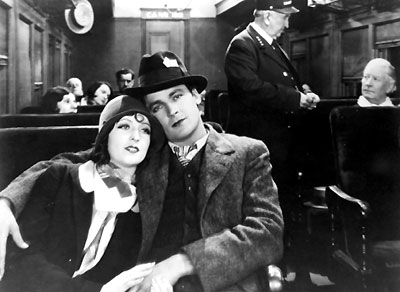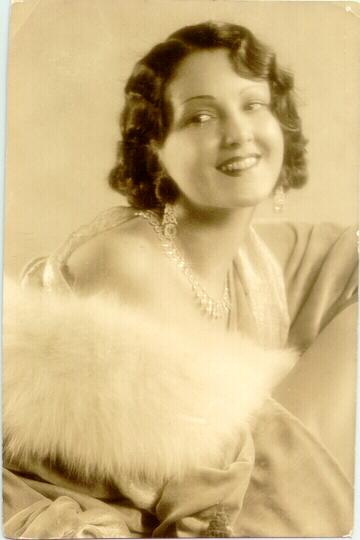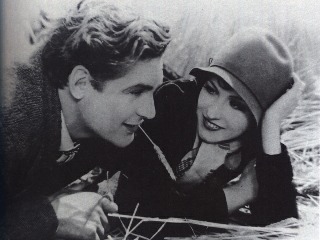City Girl, F. W. Murnau’s last Hollywood film, doesn’t have nearly the reputation
of Sunrise, his first one, but it is in some respects a greater work
and a more exciting one — if only because one can see in it Murnau’s
road to the future as a Hollywood director, if he’d lived and chosen to
remain one.
It has many themes in common with Sunrise, though here they are sometimes
inverted. A beleaguered city girl dreams of a more decent and hopeful
life in the country, meets a decent country guy who takes her off there
— and discovers the same oppression, in a different form, among the
wheatfields.
What the films have in common is a concern with good, simple people who fall
in love and whose love is tested by the meanness of the world around
them. In Sunrise the characters are iconic, almost symbolic of the
virtues they possess — they rise above stereotypes only through the
charm of the players. But the characterizations of City Girl are
naturalistic, particularized, sharply observed — greatly aided by
excellent dialogue in the intertitles.

Charles Farrell and Mary Duncan are brilliant in their roles. Farrell has the
same combination of sweetness and virility that makes George O’Brien
such an appealing hero, and Duncan’s carefully calculated balance of
hardboiled city dame and innocent dreamer is masterful. She is the
heart of the film and her experience drives it. It’s an oddly feminist
vision — the meanness of the world on exhibit here is mainly reflected
in an abuse of and disrespect for women — and Duncan’s heroic
resistance to this is thrilling, and startling. We would not see this
kind of female response to male abuse on screen in Hollywood again
until the Sixties, when it appeared in a brittle, dogmatic form far
removed from the heartfelt indignation of City Girl.

Along with the naturalism of the characterizations, more in line with
American style than the grave symbolism of Sunrise, is a less fevered
visual method — one that doesn’t announce its aesthetic ambitions
quite so loudly but that still often soars to heights of brilliance.
The long tracking shot through the wheatfield when Farrell and Duncan
first arrive at the farm, filled with hope and joy, is perhaps not as
complex technically as the moody track through the moonlit swamp in Sunrise, but it’s just as exhilarating as a piece of plastic invention and serves its dramatic moment with the same stunning efficiency and elan.
The shots of the wheat harvest with the mule-drawn machinery are equally
exhilarating, lyrical, powerful. They offer an image of timeless,
ennobling labor which contrasts profoundly with the individual
pettiness of the human characters who are operating the machines.

I think it’s fair to see City Girl as Murnau’s first experimental step
in creating a genuinely American style — one that might pass muster
among the conventional but canny minds who directed the studios, among
audiences of everyday moviegoers not especially enamored of the
European art-house mode . . . and yet one that could still incorporate his
unique plastic imagination and convey his deeply humane concerns.
It’s one of Murnau’s great films, one of the great silent films, one of the great films — its place in history, in the shadow of Sunrise, is wholly undeserved.
